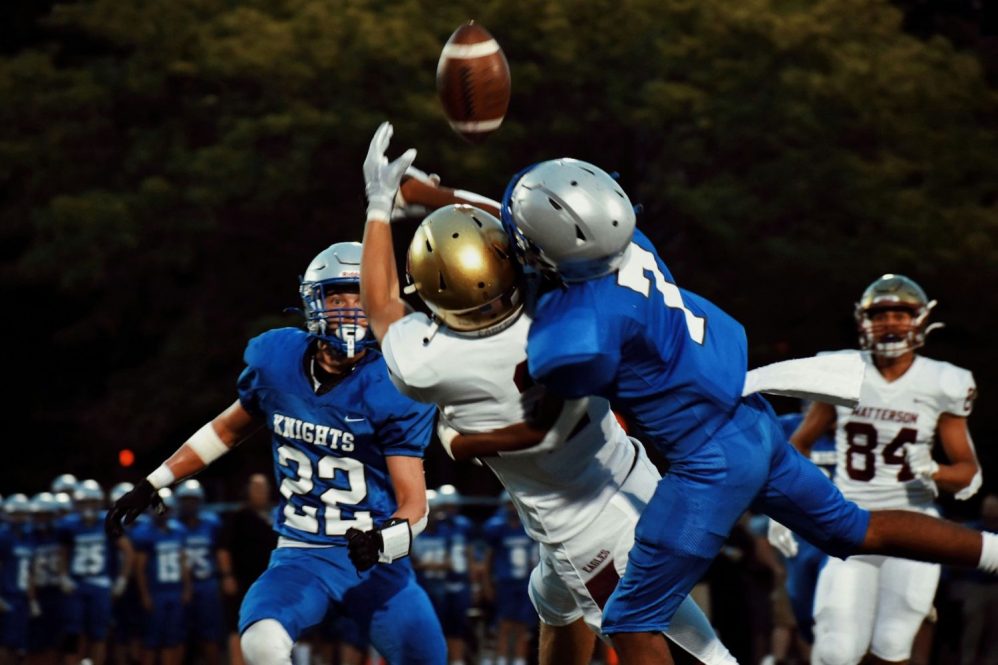A growing body of research demonstrates the importance of having athletic trainers employed in high schools, including two new papers including UConn researchers

Photo by leah hetteberg on Unsplash
One of the scariest moments in sports is when an athlete experiences a health emergency like heat stroke or cardiac arrest on the field.
Athletic trainers are medical professionals specially trained to identify and treat these kinds of emergencies quickly and with lifesaving results.
A growing body of research demonstrates the importance of having athletic trainers employed in high schools, including two new papers by researchers from the Korey Stringer Institute (KSI), housed in the College of Agriculture, Health and Natural Resources.
"Athletic trainers are unique in that they're trained in recognition, prevention, and response to emergency, potentially catastrophic injuries in sport," says Rebecca Stearns, associate professor-in-residence of kinesiology and KSI's chief operating officer.
Aleksis Grace, a PhD candidate at UConn and director of sports safety at KSI, is the lead author on a paper highlighting that among schools that employed athletic trainers, there was more survival in cases where athletes experienced an exertional heat stroke event.
This work will be presented at the National Athletic Trainers' Association (NATA) Conference in Florida in this week.
Grace and the other researchers looked at data from 2015-2021, which included 21 events.
Of the 13 cases in which an athletic trainer was employed, only five cases were fatal. In the six cases where an athletic trainer was not employed at the school, all six were fatal.
In the other two cases, the researchers could not confirm if an athletic trainer was employed at the time of the incident.
The study of exertional heat stroke in student athletes is becoming even more important as climate change is making summers, when football players are in preseason training, hotter. This time and this sport, which requires heavy padding, has the greatest risk for exertional heat stroke.
Despite the known risks and benefits, more than one third of U.S. high schools do not employ athletic trainers.
"Ensuring the athletic trainer is employed and that there is appropriate healthcare when there is the highest risk is a good way for schools to avoid liability and for there to be better outcomes from the prevention aspect, or if the event occurs, [the athlete] is potentially less likely to die," Grace says.
The researchers also found that more socially disadvantaged schools were less likely to employ an athletic trainer.
The researchers defined socially disadvantaged schools as those that are further from a level 1 trauma center, have a higher proportion of students receiving free or reduced lunch, and a higher social deprivation index score.
"There was a trend where we can say there was more survival in the schools that had athletic trainers," Grace says. "But when you look at markers of social disadvantage, the lower socioeconomic status schools were the ones less likely to have an athletic trainer."
Another paper, led by Erin Shore, a PhD candidate at the University of North Carolina (UNC) at Chapel Hill who is affiliated with the National Center for Catastrophic Sport Injury Research (NCCSIR) program, demonstrates an association between employment of an athletic trainer and lower rates of fatalities or permanent disability following a catastrophic injury. KSI is a member of the NCCSIR network.
This paper was presented at the SAVIR 2025 Annual Conference in New York in April and NATA Conference earlier this week.
The researchers used a national database of catastrophic injuries, which included non-concussion brain injuries, spinal injuries, or cardiac arrest, from 2013 to 2021 and compared that with a database of athletic trainer employment.
In general, among schools that employed an athletic trainer, there were fewer disabling or fatal injuries among athletes who experienced a catastrophic injury.
They found that this trend was true, regardless of race and ethnicity.
"Racially and ethnically minoritized individuals in the U.S. have less access to healthcare and worse health outcomes in general," Shore says. "So, I was just curious to see if those disparities panned out in the athletic injury world as well."
Among schools that employed an athletic trainer, 40% of catastrophic incidents led to fatalities or permanent disabilities among white students and 48% among non-white students.
There were much more significant differences in outcomes for both groups when there was no athletic trainer employed.
For non-white students, 67% of these catastrophic injuries were fatal or disabling. This rate was only 54% for white students.
While the researchers cannot say definitively from this study why this association exists, it points toward future avenues for continued research.
"Surveillance, in the realm of study design, can point out things we need to look at further," Kristen Kucera, UNC professor of exercise and sport science and NCCSIR director, says. "I think this is a good example of how important this information is to be able to investigate these kinds of questions."
This work relates to CAHNR's Strategic Vision areas focused on Enhancing Health and Promoting Diversity, Equity, Inclusion and Justice.






